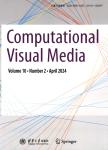Trajectory distributions:A new description of movement for trajectory prediction
Trajectory distributions: A new description of movement for trajectory prediction作者机构:School of Information EngineeringZhengzhou UniversityZhengzhou 450001China
出 版 物:《Computational Visual Media》 (计算可视媒体(英文版))
年 卷 期:2022年第8卷第2期
页 面:213-224页
核心收录:
学科分类:12[管理学] 02[经济学] 07[理学] 08[工学] 070103[理学-概率论与数理统计] 0202[经济学-应用经济学] 020208[经济学-统计学] 1201[管理学-管理科学与工程(可授管理学、工学学位)] 081104[工学-模式识别与智能系统] 0835[工学-软件工程] 0714[理学-统计学(可授理学、经济学学位)] 0811[工学-控制科学与工程] 0701[理学-数学] 0812[工学-计算机科学与技术(可授工学、理学学位)]
基 金:supported in part by the National Natural Science Foundation of China under Grant Nos.61772474,61802351,61822701,and 61872324 in part by the Program for Science and Technology Innovation Talents in Universities of Henan Province under Grant No.20HASTIT021
主 题:trajectory prediction convolutional LSTM trajectory distributions social probabihty method
摘 要:Trajectory prediction is a fundamental and challenging task for numerous applications,such as autonomous driving and intelligent *** works typically treat pedestrian trajectories as a series of 2D point ***,in real scenarios,the trajectory often exhibits randomness,and has its own probability *** by this observation and other movement characteristics of pedestrians,we propose a simple and intuitive movement description called a trajectory distribution,which maps the coordinates of the pedestrian trajectory to a 2D Gaussian distribution in *** on this novel description,we develop a new trajectory prediction method,which we call the social probability *** method combines trajectory distributions and powerful convolutional recurrent neural *** the input and output of our method are trajectory distributions,which provide the recurrent neural network with sufficient spatial and random information about moving ***,the social probability method extracts spatio-temporal features directly from the new movement description to generate robust and accurate *** on public benchmark datasets show the effectiveness of the proposed method.



